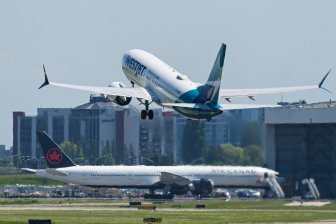The United Auto Workers walked off the job at an additional plant each at General Motors and Ford, but the union spared Stellantis after last-minutes concessions by the Chrysler parent, union president Shawn Fain said on Friday.

The first-ever simultaneous strike against the Detroit Three automakers enters its third week, expanding to Ford’s Chicago assembly plant and GM’s Lansing, Michigan, assembly plant, covering about 7,000 workers, Fain said in an announcement.
That brings the total number of workers on the picket lines to 25,000, or about 17% of the union’s 146,000 members at the three automakers.
Rather than the hammer blow of a mass walkout it has wielded historically, the UAW is strategically playing the companies against each other, using reprieves from expansion of work stoppages as encouragement with different automakers the last two weeks.

The expanded strike was still avoiding pickup trucks, Detroit’s biggest profit-makers, a further sign of restraint. Workers on Friday walked out of the Ford assembly plant in Chicago that builds the Ford Explorer and Lincoln Aviator SUVs, as well as the GM plant in Lansing that makes the Chevy Traverse and Buick Enclave SUVs.
“Despite our willingness to bargain Ford and GM have refused to make meaningful progress,” Fain said in a video address Friday morning. He noted that prior to his announcement, the UAW had seen a “flurry” of interest from the companies on Friday morning.
Ford CEO Jim Farley said on a conference call that Fain was holding a deal hostage to the fate of electric vehicle battery plants, including some that Ford is building with outside companies. The UAW wants those workers represented by the union and paid the highest-tier wages.
While the company said the two sides are close on wages and benefits, Farley said meeting the UAW’s demands on the battery plant workers would have a “devastating impact.” Farley said an impasse could occur in the talks if the UAW doesn’t change its stance on that issue.

Farley also warned suppliers are “on a knife’s edge” as a result of the strike and if it continues as many as 500,000 supplier employees could be laid off.
GM said in an email to employees it still has not received a comprehensive counteroffer to its Sept. 21 proposal. “Calling more strikes is just for the headlines, not real progress,” GM said.
Stellantis, which was spared an additional walkout on Friday, said: “We have made progress in our discussions, but gaps remain. We are committed to continue working through these issues in an expeditious manner.”
Moments before Fain was due to address members at 10 a.m., Stellantis made significant changes in its proposal, he said. That led to a half-hour delay in his announcement, and spared Stellantis from escalation.

Fain cited progress with Stellantis around cost of living allowance payments, as well as right to strike over product commitments and plant closures. Talks continue at all three companies.
Arthur Wheaton, director of labor studies at Cornell University, said: “What Shawn Fain wanted is a tit for tat: If you’re good for us at the table, we won’t mess with you. If you’re bad with us at the table, we will escalate the strike.”
WORKER DEMANDS
The U.S. has seen an uptick in union activism. Through August – before the UAW strike – 310,000 U.S. workers were involved in work stoppages, putting 2023 on track to become the busiest year for strikes since 2019.
UAW autoworkers are particularly vocal about getting higher wages, benefits and the elimination of a two-tier wage system that pays newer workers far less.
Automakers have said the union’s demands would hurt profits as they try to compete with nonunion manufacturers like Tesla.

Workers began the strike on Sept. 15 one plant each from GM, Ford and Stellantis. The union escalated on Sept. 22, when workers walked off the job at GM and Stellantis distribution facilities in 20 states nationwide.
The UAW did not strike at Ford distribution facilities last week, citing progress in talks. Ford and UAW negotiators appeared to be close to an agreement this week, but talks stalled, said sources familiar with the talks who asked not to be identified. Ford’s decision to stop work on a US$3.5 billion battery plant in Marshall, Michigan, drew an angry response from Fain.
The UAW has a strike fund of $825 million and also faces potential strikes at Mack Trucks and three Detroit casinos. Workers on the picket lines receive $500 a week from the strike fund.

The effect of the walkouts on the automakers has been relatively limited compared to the financial hit that would come from halting assembly lines that build Ford F-series, Chevy Silverados and Ram trucks. The UAW’s expanded strike is meant to hurt GM and Ford, but not inflict maximum pain, a source familiar with the thinking said.
Analysts estimate GM, Ford and Stellantis earn as much as $15,000 per vehicle on each of their large pickup trucks.
“It shouldn’t affect volumes too much. It’s another warning,” Sam Fiorani, vice president of global vehicle forecasting at AutoForecast Solutions, said of the added plants. “They haven’t hit the meat of the profits.”
The union and the companies remain far apart on key economic issues. Fain has stuck with a demand for 40 per cent pay hikes over a four-year contract, a position supported this week by President Joe Biden. The companies have offeredpay hikes of about 20 per cent.
Cornell’s Wheaton said the lower wage tier that automakers pay to newer workers is comparable to what the fast-food sector pays. That makes it easier for a striking worker to replace his or her income.



Comments